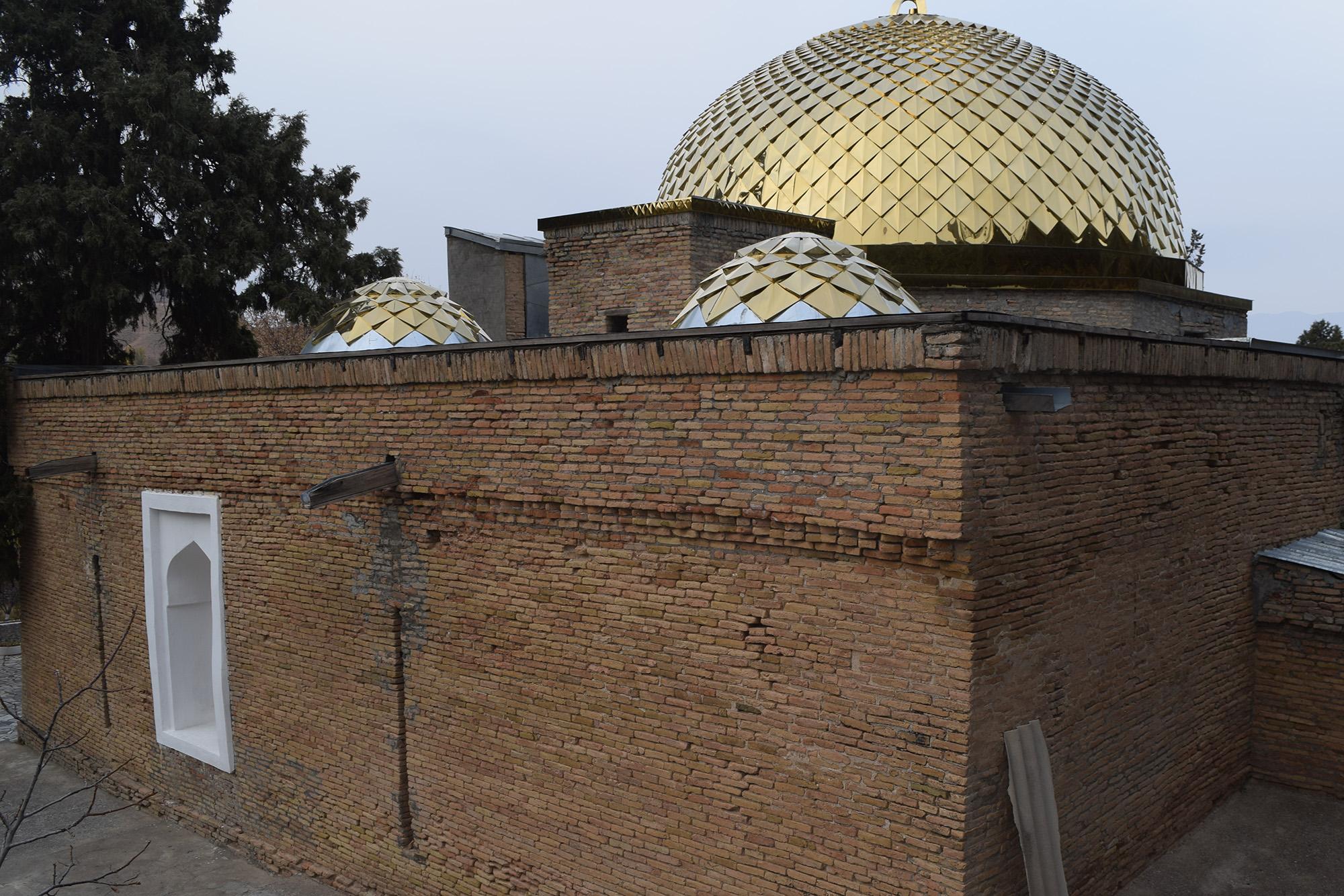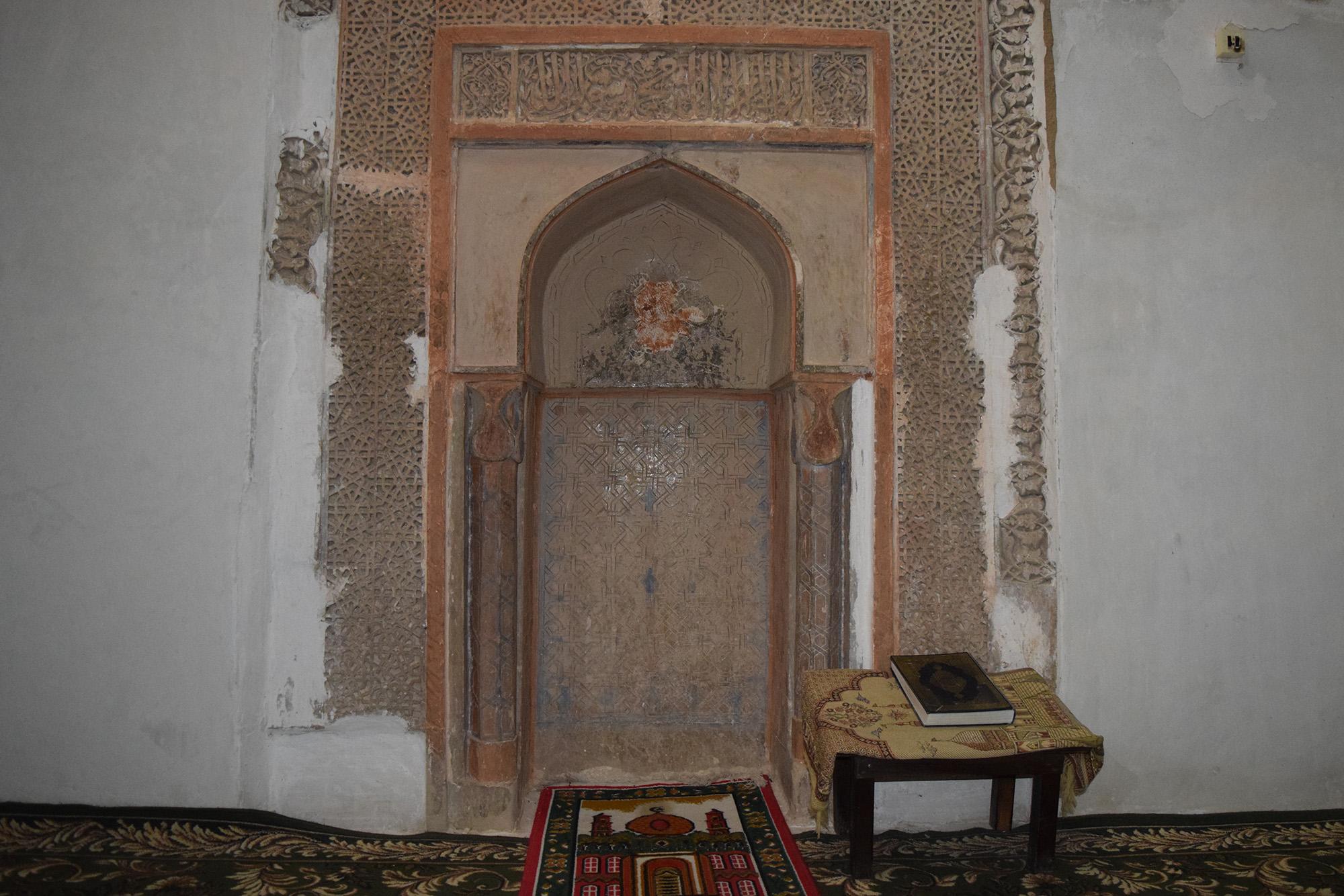Mausoleum of Khoja Mukhammad Bashoro

Heading up into the mountains, away from the main Silk Roads thoroughfare along the Zarafshan River, you'll come to the small Tajik village of Mazori Sharif. It's here you'll find an important and well maintained historical landmark – the Mausoleum of Khoja Mukhammad Bashoro.
Although the mausoleum is dated to 1342, it was an expansion of a building that already existed as a smaller square-shaped mosque. The original hall in the centre is topped with a large dome, while the lateral wings added on both sides are connected by impressive arches. Rising up from the floor to the centre of the dome is a dry tree trunk, which is a rare example of the evolution of Muslim architecture blended with local traditions and beliefs.

The most significant feature of the mausoleum is the front arched portal, known as a peshtak. Richly decorated with carved terracotta and inserts of coloured glazed tiles and brick, it's considered to be one of the best in Central Asia. Above the entrance is a carving with the date of the building's construction written in elaborate Kufi script (an early style of Arabic writing).
There are quite a few artistic elements to take note of within the mausoleum, including carved plaster known as ganch that covers many of the walls. A particular highlight is the tiered tombstones that were made in the Samarkand style and are examples of magnificent ornamental craftmanship.

Although the Mausoleum of Khoja Mukhammad Bashoro was built during the post-Mongol Islamic period, it has barely been changed since, with only limited modern restorations. This makes it a rare case of an almost untouched authentic religious building along this stretch of the Silk Roads, and well worth a detour from the main driving itinerary.

